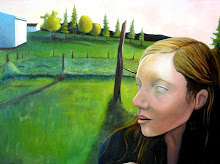Lately I have been reading A Mixed Multitude: The Struggle for Religous Toleration in Colonial Pennsylvania by Sally Schwartz. This 302 page work gives an overview not only of the policies of Wiliam Penn toward religious toleration but also attempts to outline the way ordinary Pennsylvanians dealt with life in a pluralistic society. In the first chapter Schwartz explains that in the 1790 census 61% of the U.S. popuation was English, 9% were German, 8% were Scotish, 6% were Scots-Irish, and and the remainder consisted of even smaller, unidentified groups. In contrast Pennsylvania's population 35% English, 33% German, 11% were Scots-Irish, and 9 % were Scotish. Pennsylvania had a much more pluralistic society than the rest of the U.S. and probably the rest of the colonies before the U.S. gained independence. This gave Pennsylvanians uniqu opportunities to define norms of toleration that other people did not have, but that would largely be put into practice throughout the U.S. when the seperation of church and state was established.
In the first chapter Schwartz warns us not to think about ethnicity in the eighteenth century through our modern understanding of it. It would be a mistake to consider enthic groups in terms of the "minority" and "majority" status that we label ethnic groups today. In colonial Pennsylvania groups were moving in and creating a new society, not trying to blend into an already established one as would happen with the immigratns of the 19th and 20th centuries.
The greatest drawback to Schwartz's book is the lack of a voice for ordinary eighteenth century Pennsylvanians. This is not the fault of the author, however, because written documents by the common sort in Pa in the 18th century are hard to come by, and when people did leave a written record they were often times not expounding on their feelings about ethnic identity and religous toleration. The sources are mostly from government officials, the better sort of people who outlined their feelings on religious life in colonial Pennsylvania, and numerous minister of different denominations who recorded their feelings on the religious chaos.
Overall, however, Schwartz gives a thought provoking account of religious life in colonial Pennsylvania. She shows the numerous shades of gray that existed when it came to religous identity, and how people in Pennsylvania transitioned fluidly from one religious group to the next. She also does well to illuminate the tensions that existed between groups like Anglicans and Quakers, Moravians and Church Germans, and the Catholics verses everyone else. I would recommend Schwartz's book to anyone who wanted to get an overview of the complex religious situation in colonial Pennsylvania.
Subscribe to:
Post Comments (Atom)


No comments:
Post a Comment